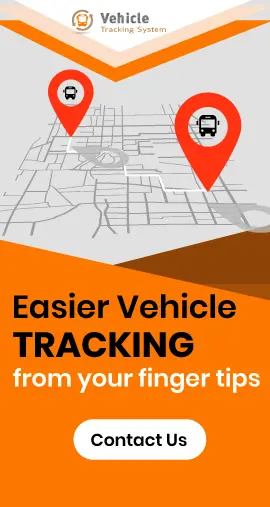How do GPS Based Vehicle Tracking Systems Deal with Error in GPS Positions
September 12th, 2017
As a matter of fact, considerable changes have been introduced in the GPS based vehicle tracking systems over the past few years. Though new models of GPS vehicle tracking systems soon increased accuracy and precision, the GPS trackers sometimes fail in the task.
Researchers therefore is focused further on the development of error-free and cost effective models, which can transmit the data as accurately as possible and henceforth it can be analysed by the fleet management software.
Such advanced versions have managed to overcome the hassle of errors in GPS tracking through various modes. Let’s peek into some of its advanced features:
1. Low Precision
Precision refers to the effectiveness of finding the coordinates for a particular position at any given time. The range might be larger for less precise obsolete receivers and smaller for those with high precision.
The Federal Aviation Administration of the United States of America (USA) has developed supporting aids like Wide Area Augmentation System (WAAS) for improving the precision of the tracking system.
Meanwhile, the system utilizes ground reference stations and their coordinates to increase the accuracy. Nevertheless, the system is slightly expensive and serves those purposes, which require high accuracy.
Precision also reduces when the satellites are widely apart or clustered together. For highly precise location, one satellite should be directly above the vehicle, and the other three should be spaced equally and stationed as close to the horizon as possible.
However, the error is predictable and can determine the quality of the GPS data. When analyzing data for fleet management purposes, the data quality is first ensured.
2. Clock Errors
Normally, the location and distance covered by the vehicle is calculated from the difference in the time, in which the signal is sent and then received back. Therefore, any error in the GPS clock might get translated to error and decrease accuracy.
Satellites normally carry three or four Atomic clocks, which are in turn utilized by the local atomic clocks to synchronize and correct to the UTC (Coordinated Universal Time). These local clocks in turn are utilized to correct the GPS devices and networks.
A manually set clock on GPS device therefore can lead to errors and is usually avoided in newer model with an accuracy range increased to a few milliseconds, sometimes even up to 1 microsecond depending on the frequency and reference clocks for synchronisation.
3. Atmospheric Effects
The ionosphere is the uppermost strata of the earth’s atmosphere and can influence the GPS signal’s quality while passing through it. Based on the local density of the ions, the extent of solar radiation, and the latitude of the place of the vehicle, the effect can vary. Predictive Analysis techniques are being implemented to model the ionosphere and to calculate the corrections.
GPS reference stations on the ground can transmit these corrections to the satellites and they can transmit the data along with the corrections to the GPS receiver. Fleet management solutions can in turn incorporate the data as well as the corrections thus provided to eliminate such errors.
4. Error due to Other Atmospheric Layers
The other atmospheric layers beneath the ionosphere, such as stratosphere, troposphere etc. also cause inordinate delays in reaching the earth’s surface.
And, the delay might be significant for signals from far satellites, but whose quality is more reliable. Such delays can also be predicted and utilized to adjust the error in the GPS data.
5. Satellite Factors
Satellite parameters such as orbital path, velocity, etc. vary even though in a minor range. For an accurate vehicle location identification, the exact position of the satellite in the orbit and the velocity need to be taken into account.
The control unit monitor these locations, and any orbit anomalies are calculated and collectively send in batches known as ephemerides.
Simply, it is like the satellite identifying its own position relative to earth and sending it in batches to the GPS receiver on earth so that the distance errors can be minimised. Advanced versions of GPS vehicle tracking systems can compute the error and correct it based on the pattern of ephemerides.
7. Multipath Errors
GPS receivers can receive all signals, irrespective of the source. Selective identification of satellite data from those that are the result of reflection from other high objects such as buildings or trees etc. is therefore essential.
The error can be minimized by the utilization of specifically designed antennas that reduce other noise or the conditional use of satellite data, which are transmitted from those situated nearer to the horizon, say for example within 15 degrees (termed as mask angle).
Newer models are developed in such a way that it minimizes all these errors and provides accurate data at affordable costs.

